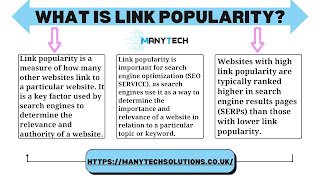HOW TO OPTIMIZE IMAGES, VIDEOS & OTHER MEDIA CONTENT FOR SEO?
Optimizing images, videos, and other media content for SEO
can help improve your website's rankings in search engine results pages. Here
are some tips on how to optimize your media content for SEO:
- Compress
your images: Large images can slow down your website's loading speed,
which can negatively impact your SEO. Compress your images using tools
like Photoshop or free online tools like TinyPNG to reduce their file size
without sacrificing quality.
- Use
descriptive file names: Rename your image or video files using
descriptive, keyword-rich file names. For example, instead of
"IMG_1234.jpg," use a file name like
"best-red-widgets.jpg."
- Add
alt tags to images: Alt tags provide a text description of an image,
making it accessible to people who are visually impaired or using a screen
reader. Alt tags also help SEO SERVICE understand
what an image is about. Use descriptive, keyword-rich alt tags that
accurately describe the content of the image.
- Add
captions and transcripts to videos: Captions and transcripts make your
videos more accessible to people who are deaf or hard of hearing, and they
also help search engines understand the content of your videos. Use
accurate and descriptive captions and transcripts that include relevant
keywords.
- Use
structured data: Structured data is a way to provide search engines with
more information about your content. Use structured data to help search
engines understand the context of your media content, such as the type of
video or the location of an image.
- Optimize
video file size: Like with images, large video files can slow down your
website's loading speed. Compress your videos using tools like HandBrake
or Adobe Media Encoder to reduce their file size without sacrificing
quality.
- Host
your media content on your own domain: Hosting your media content on your
own domain instead of a third-party platform like YouTube can help improve
your website's authority and rankings.
- Use
video sitemaps: A video sitemap is a way to tell search engines about the
videos on your website. Use video sitemaps to help search engines discover
and index your videos.
By optimizing your media content for SEO, you can improve
your website's rankings and visibility in search engine results pages.




Comments
Post a Comment